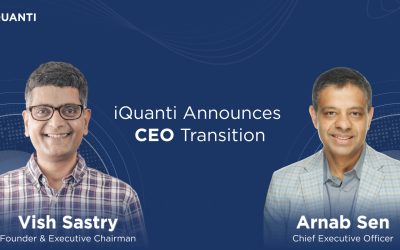In 2024, bank marketers need to find a delicate balance in their digital acquisition strategy. Digital marketing and paid media spending are expected to see an upswing, but overall marketing budgets have shrunk. Competition in the digital realm is getting fiercer. Customers today expect more from their digital experiences. AI is transforming marketing at all levels. There are added hurdles this year with the increase in paid search costs and the deprecation of third-party cookies. As customers’ privacy concerns grow, bank marketers face even greater challenges due to the heavily regulated environment compared to most other sectors.
With more and more customers moving digital, banks are also progressively relying on digital channels for customer engagement and acquisition while maintaining their strong brick-and-mortar presence. The larger banks especially, are investing heavily in digital capabilities and infrastructure enhancement.
In this hyper-competitive digital scenario, how can you compete and win in digital customer acquisitions in banking (without breaking the bank ?)?
Here are the key digital customer acquisition strategies for banks in 2024 that we unpacked in our recent webinar.

Vish Sastry (Founder & CEO, iQuanti) is in conversation with Raghu Vasu (Senior VP, Digital Marketing & Transformation, US Bank) in this fireside chat hosted by American Banker. They explore strategies to help bank marketers make the most of their acquisition dollars in a highly competitive digital marketing landscape in 2024.
Access the on-demand webinar here.
Hosted by:
1. Building an impactful, integrated full-funnel acquisition program
In most cases, we now see customer journeys starting in the digital space – whether it is on Google, a bank’s website or even on TikTok/Instagram. Often the customer might complete their journey online – apply for a credit card online or check their eligibility for a personal loan etc. Depending on the product and business line, a significant portion of financial services interactions begin digitally but often conclude in banks or call centers to this day. And both these behaviors are equally important. As acquisition marketers, you need to look at digital acquisitions as a full-funnel, integrated program, one that spans and connects experiences across online and offline channels.
A sound audience strategy around who, where, when, and how we are trying to reach prospects is a critical path. When scaling acquisitions across various stages of the funnel, understand that at the highest level there is demand capture and demand generation.
Demand capture is about reaching out to customers who are already in the market for a product or a service, for example, student loans or mortgages, and are typically lower-funnel. Demand generation is a long game which starts with building awareness and consideration for the brand, and then reaching out to the potential customer with the right message with specific triggers.
Recent research from Curinos has shown that financial services brands who invest in both brand and performance tend to overachieve than those brands that focus exclusively on lower funnel.
An impactful acquisition strategy would be one that addresses key questions like:
a. Do we focus on high intent audience to prime the audience for lower funnel messaging/offers?
b. Is our target audience engaging more through new content formats like short-form videos in emerging channels like social?
c. How do we balance the privacy needs in a regulated space while taking advantage of data driven opportunities?
d. Are the search/programmatic/affiliate channels rightly optimized?
e. How do we pull the audience across the funnel from brand messaging to the action layer?
Consider the entire customer journey, not just the bottom stage of the funnel. Look at where your audience is and how they consume content. Strategize on engaging them across the entire journey.
2. Instituting foundational data capabilities for long-term success
Building an underlying data infrastructure is critical for you to be able to understand if that the marketing deployment is working or not. As marketers you need to prove and measure value.
Customers expect seamless experiences across online-offline channels. But on the flip side, the world, thanks to stricter regulations around privacy, seems to be moving in the opposite direction, where tracking and marketing across platforms is becoming more difficult.
You need to be able to seamlessly connect the dots and orchestrate journeys across channels.
Building your measurement infrastructure is a journey. Having the right attribution models in place and leveraging the 360 views of the customer to drive omnichannel experiences, especially in deepening and retention of existing customers is a huge opportunity for bank marketers. Building out your first-party data infrastructure (both customer and site behaviors) using tools like CDP will be an important step in delivering engaging and personalized experiences.
It is critical to develop the right partnerships (internally or externally) in measurement and attribution. External partners may have broader relationships for tracking/identifying etc. for example, specific partnerships with walled gardens like Meta and Google or network TV that brands typically don’t have access to. They may also have a deeper understanding of the platforms as well and are constantly identifying and resolving challenges in the market (for example, enhanced ID resolution).
3. Building efficiencies by focusing on value vs. volume
One of the biggest trends in banking we’ve seen is a movement towards value.
In banking, the values of customers can vary greatly. By switching focus from volume of customers or cost per account and using the value they drive as a layer of consideration, you can make strategic shifts that would deeply impact your bottom line. Brands have continued to evolve in this space as more data becomes available in real-time to help optimize for value (vs. just clicks or application submits or conversions).
To make the most of your media spending, it is also important to build a solid conversion optimization program. Focus needs to be on ensuring that your landing pages align with compliance, but also align with the customer journey. Once you get in front of the right customer, it is critical to make sure your messaging mirrors the customer’s needs.
Elevate, Engage, Convert!
Explore LEAP (Landing Experience Accelerator Program) –
iQuanti’s cutting-edge, data- and tech-led landing page management and optimization program that has successfully empowered leading brands to deliver exceptional online experiences.
Optimizing for NPV of product tiers or for revenue from lending/deposits balance is feasible if you are able to set up the tracking and optimization to gather/optimize data in real-time (for example, in value-based bidding). We need to layer value-based techniques in addition to the typical volume-based optimization activities like reaching high-intent audiences, landing page optimization, application funnel optimization and onboarding/deepening at the end of the funnel.
For prospect acquisition, we need to evaluate how we set efficiency goals. For example, brand search is a very efficient tactic, but the data would suggest that brand search over indexes on existing customers versus non-brand that over indexes on prospects. Therefore, setting different efficiency thresholds for something like brand vs. non-brand or retargeting vs. prospecting is critical for marketers to right size their approach to efficiency.
4. Future-proofing your digital acquisition strategy
AI becoming more mainstream in marketing has opened new opportunities (and challenges) for bank marketers, which need to be explored further. Latest research shows that 73% of consumers believe AI can have a positive impact on their Customer Experience, particularly in digital settings.
As you set out to invest in building AI capabilities, you need to look at the impact of AI from two perspectives – in terms of revenue it can generate and in terms of productivity and efficiency it can drive. AI is revolutionizing the game by making it possible to use value-based data to optimize media buys and optimize their outcomes. AI can also help increase the velocity of the creative and reduce cost of production significantly.
Looking at generative AI, speeding up creative development and agilely iterating creative content for testing, evaluation, and optimization — particularly with external media — will be crucial for efficiency gains. Generative AI can also help customize and personalize website content. It allows for iterating both short and long-form content to address customer needs, leveraging data and behavioral insights such as loan purposes. It can also help streamline operations, including planning, keyword expansion, and ad copy testing.
The other major avenue that bank marketers need to actively work on to future-proof their acquisition strategy is around privacy and ID resolution. Customers are now in control of their relationships with brands, not the other way around. Recent Google research shows that 43% of consumers would switch from their preferred brand to a second-choice brand if the latter provided a good privacy experience.
Given the push for privacy, stitching the data across sites/experiences will continue to be a challenge especially as cookies go away completely by the end of 2024. This would call for a a strong partnership with the bigger consolidated walled gardens (Google, Meta, Amazon) as there is a lot we can do to optimize within the walled garden.
Access the on-demand webinar for a deeper understanding of these strategies.
As you kick off 2024, start with an assessment of where you are – benchmark against competition, identify your gaps, explore where your opportunities lie, and build a short-term and long-term strategy around it. We are always open to a conversation about how we have actioned this for our banking and financial services clients and the results we have driven for them. Reach out to us today for a quick consult.




